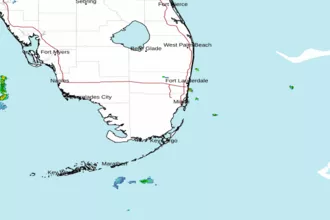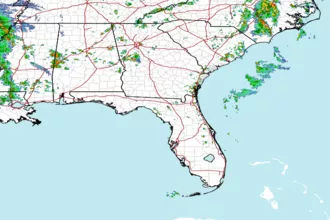
Chokoloskee to Bonita Beach FL out 20 NM Marine Forecast
| Tonight...Ne Winds 5 To 10 Kt, Becoming E After Midnight. Seas Less Than 2 Ft Or Less. Wave Detail: E 1 Foot At 2 Seconds. Bay And Inland Waters Light Chop. |
| Fri...E Winds 5 To 10 Kt. Seas Less Than 2 Ft Or Less. Wave Detail: E 1 Foot At 2 Seconds. Bay And Inland Waters Light Chop. |
| Fri Night...Ne Winds Around 5 Kt. Seas Less Than 2 Ft Or Less. Bay And Inland Waters Smooth. |
| Sat...Ne Winds Around 5 Kt, Becoming N In The Afternoon. Seas Less Than 2 Ft Or Less. Bay And Inland Waters Smooth. |
| Sat Night And Sun...N Winds 5 To 10 Kt. Seas Less Than 2 Ft Or Less. Bay And Inland Waters Light Chop. |
| Sun Night...N Winds 5 To 10 Kt, Becoming Ne After Midnight. Seas Less Than 2 Ft Or Less. Bay And Inland Waters Light Chop. |
| Mon Through Tue...E Winds 5 To 10 Kt. Seas Around 2 Ft. Bay And Inland Waters Light Chop. |
| Area Forecast Discussion National Weather Service Miami FL 223pm EST Thu Nov 20 2025 ...New .KEY MESSAGES... Updated at 219pm EST Thu Nov 20 2025 - Mainly sunny and pleasant conditions will remain in place across South Florida through the week. - Patchy fog is possible overnight into early Friday morning across interior portions of South Florida. Issued at 219pm EST Thu Nov 20 2025 No major changes were made to the previous forecast as everything looks on track with high pressure continuing to bring dry conditions to the region. There is the potential for some patchy fog development once again overnight into early Friday morning across the interior portions of South Florida. Any fog that does develop will quickly lift after sunrise and dry conditions will persist through the rest of Friday. Low temperatures tonight will range from the upper 50s west of Lake Okeechobee to around 70 across the east coast metro areas. .SHORT TERM... (Today through Friday) Issued at 1220am EST Thu Nov 20 2025 Upper level ridging extends from the Gulf into Canada, with South Florida remaining on the eastern periphery of this feature. At the surface, high pressure centered over the western Atlantic will continue to shift offshore. This will maintain east-northeasterly flow over the area, and partly cloudy conditions each day through the period. Moisture profiles remain below average, with PWAT (Precipitable Water) values ranging from .8 inches to 1 inch, but there may be a few isolated showers along the east coast during the morning hours each day. Without ample moisture and forcing, these would be low- topped and extremely short-lived. POPs remain less than 10% for all of South Florida. High temperatures today and tomorrow will reach the lower 80s along the coastline, with mid to upper 80s possible for portions of interior South Florida. Long Term (Friday night through Wednesday) Issued at 1220am EST Thu Nov 20 2025 Not much change with the long term outlook as high pressure firmly remains in control through the weekend into the new work-week. Late in the weekend a weakening cold front will settle into north Florida and washout early next week with another area of high pressure building in from the north. This boundary is expected to be so weak that we may not even see a surface flow response to it across South Florida and maintain east-northeast flow through the weekend. With a lack of moisture, and a lack of moisture advection from this frontal boundary, sensible impacts will be nearly nonexistent and we should be able to maintain primarily partly cloudy and pleasant conditions each day through the long term period. High temperatures will reach the low to mid 80s each afternoon along the coasts while some portions of inland SW Florida may hit the upper 80s. Overnight lows will be in the mid to upper 60s. Marine Issued at 1220am EST Thu Nov 20 2025 A gentle to moderate east-northeast breeze will prevail across local waters today and tomorrow. Wave heigheights should remain 3 feet or less. NOAA Miami FL Office: Watches - Warnings - Advisories FL...None. AM...None. GM...None. |
 Miami FL Radar
Miami FL Radar Southeast Radar
Southeast Radar